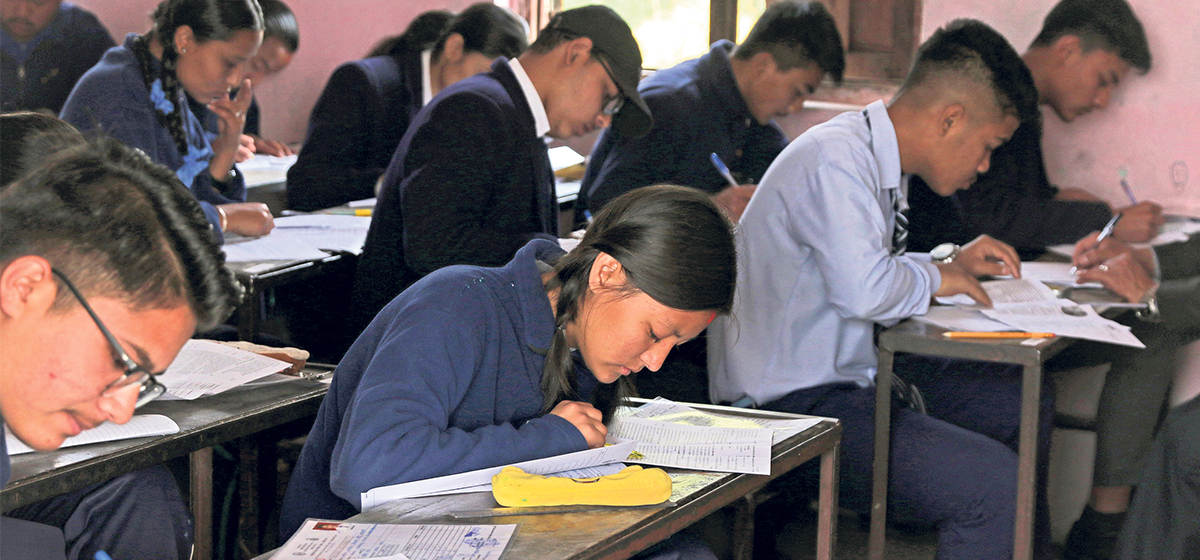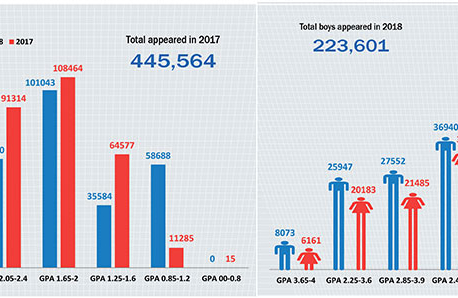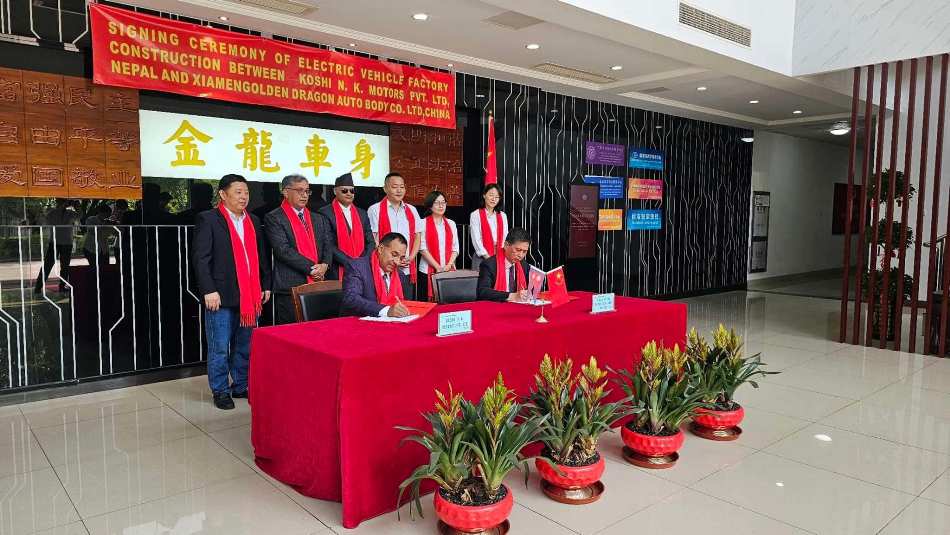
OR
Editorial
A long way to go despite improved SEE results
Published On: July 7, 2023 07:30 AM NPT By: Republica | @RepublicaNepal

The results of the Secondary Education Examination (SEE) announced on Thursday have brought a glimmer of hope to the education sector, indicating a significant improvement compared to the previous year. The number of students achieving higher GPAs has seen a commendable increase, as revealed by the National Examination Board. However, while these results are undoubtedly cause for celebration, it is essential to recognize that there is still a long way to go in addressing the underlying issues that plague our education system.
According to the National Examination Board (NEB) that conducts the SEE, the number of students scoring between 3.6 to 4 GPA has risen significantly. Last year, only 9,633 students fell within this range, while this year the figure has soared to 22,475. This increase accounts for 4.63 percent of the total number of examinees, a significant jump from last year's 1.94 percent. Similarly, the percentage of students scoring between 3.2 to 3.60 GPA has risen from 8.4 percent to 11.36 percent. These figures undoubtedly indicate progress, but we must delve deeper into the reasons behind this improvement. NEB officials have attributed the improved results to the post-COVID-19 era, stating that students had ample time to dedicate to their studies. During the pandemic, students were unable to attend physical classrooms regularly, leading to disrupted learning and limited interaction with teachers. However, with the easing of restrictions and the return to normalcy, students were afforded the opportunity to catch up on their studies, resulting in a positive impact on their SEE performance.
While it is undeniable that the pandemic played a role in the improved results, it is crucial to acknowledge that this alone is not the sole reason for the progress. There are other factors at play, such as the overall improvement in school infrastructure and the examination system. NEB officials assert that the enhanced results demonstrate that the atmosphere in schools and classrooms is gradually improving. This suggests that the conducive learning environment, coupled with the recent advancements in the examination system, has positively influenced student performance. However, it would be premature to assume that these improvements signal the complete transformation of our education system.
We must recognize that there are still significant challenges that need to be addressed. The SEE results may have improved, but we cannot overlook the fact that a substantial number of students are still unable to achieve satisfactory grades. There remains a sizable portion of our youths who require additional support and resources to realize their full potential. Furthermore, the education system as a whole continues to grapple with various issues. Disparities in access to quality education, inadequate resources, and outdated teaching methods persist, hindering the holistic development of our students. Merely focusing on the examination results should not divert our attention from the larger goal of providing a well-rounded education to all students, irrespective of their background.
Additionally, while the pandemic may have provided students with more study time, it also exposed the digital divide among students. Many lacked the necessary devices and internet connectivity to participate effectively in remote learning, further exacerbating the existing educational inequalities. It is crucial to address these systemic disparities to ensure that every student has equal opportunities to succeed. The improved SEE results are certainly a cause for optimism, but we must not lose sight of the challenges that persist within our education system. The progress we have witnessed is undoubtedly encouraging, but it should serve as a reminder of the work that lies ahead. Our focus should not solely be on examination results, but on ensuring equitable access to quality education, fostering a supportive learning environment, and equipping our students with the skills they need to thrive in the ever-changing world. Only by addressing these fundamental issues can we truly transform our education system and pave the way for a brighter future for all.
You May Like This
_20230331082116.jpg)
In Pictures: Teachers, parents wish good luck to SEE appearing students
KATHMANDU, March 31: Secondary Education Examination (SEE) has started all across Nepal from today. Teachers as well as parents have... Read More...

Thirty-four students disqualified for SEE due to attendance issue
PALPA, March 15: Thirty-four students in Palpa have been ineligible to sit for the Secondary Education Examination (SEE) scheduled to... Read More...

SEE results paint bleak picture as more students obtain lowest GPA
KATHMANDU, June 24: The results of Secondary Education Examination (SEE) this year could not match the expectations raised by last year’s... Read More...




Just In
- Nepal and Vietnam could collaborate in promotion of agriculture and tourism business: DPM Shrestha
- Govt urges entrepreneurs to invest in IT sector to reap maximum benefits
- Chinese company Xiamen investing Rs 3 billion in assembling plant of electric vehicles in Nepal
- NEPSE inches up 0.07 points, while daily turnover inclines to Rs 2.95 billion
- Gandaki Province reports cases of forest fire at 467 locations
- Home ministry introduces online pass system to enter Singha Durbar
- MoLESS launches ‘Shramadhan Call Center’ to promptly address labor and employment issues
- Biratnagar High Court orders Krishna Das Giri to appear before court within one month in disciple rape case














Leave A Comment